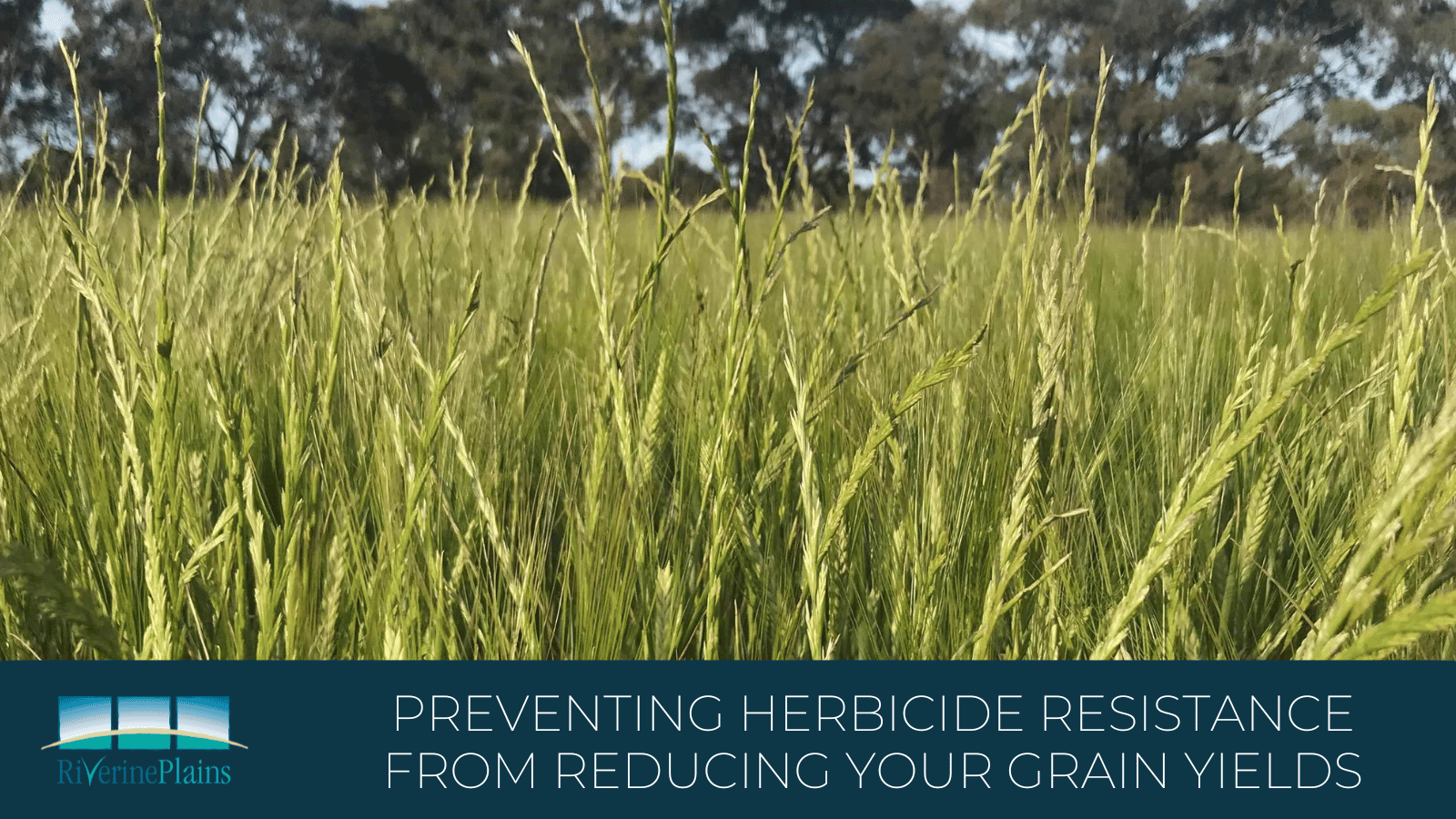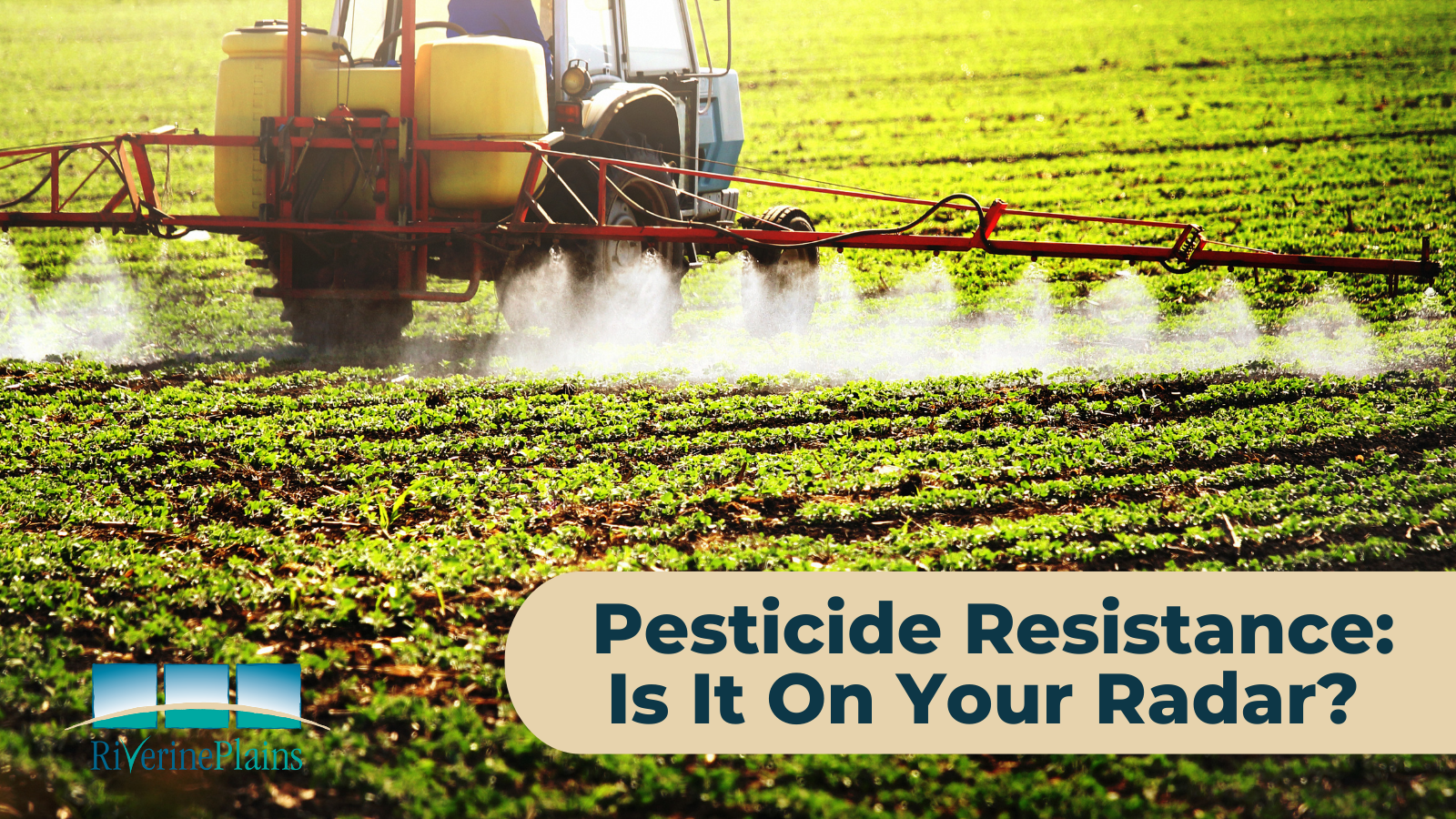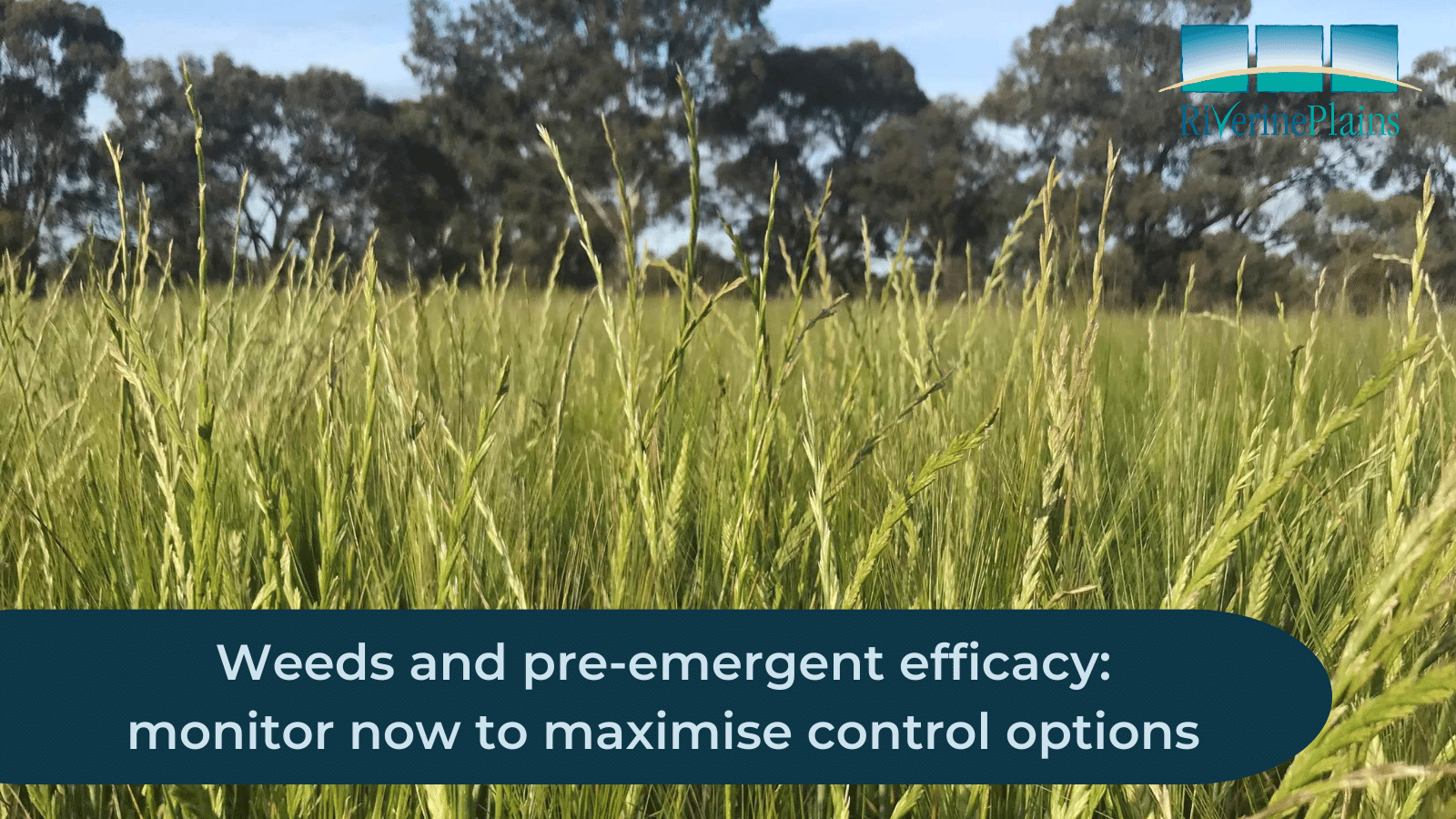Preventing herbicide resistance from reducing your grain yields

Key Messages
- weed herbicide resistance levels are continuing to increase across the Riverine Plains region
- it’s important to monitor resistance, especially to post-emergent chemicals and glyphosate
- weed seeds can be collected from problem paddocks for resistance testing
- adopting an integrated weed management strategy, or methods from ‘The Big 6’, will ensure farmers stay on top of weed control issues
Herbicides are a valuable tool for weed management in agriculture, however over-reliance on specific herbicides can lead to the development of resistant weed populations.
Resistant populations can be costly, both in terms of reduced grain yields from increased weed competition and the time and financial investment required for alternative controls.
So how can you identify and manage the risks of weed herbicide resistance on your farm?
Weeds to watch in the Riverine Plains
Herbicide resistance occurs when a weed population develops the ability to survive exposure to a herbicide that was previously effective. This evolution is driven by natural selection of weed populations that have genetic traits enabling them to withstand the herbicide's effects.
Three difficult weeds have been at the centre of herbicide resistance across eastern Australia.
Annual ryegrass is one of the most problematic weeds due to its rapid growth and prolific seed production. It has developed resistance to virtually all post-emergent herbicides in some cases, making it challenging to control.
Sow-thistle is a broadleaf weed that has shown resistance to post-emergent herbicides with widespread resistance to Group 2 (B) herbicides. Its ability to produce a large number of seeds contributes to its persistence across the region.
Wild radish is another weed species with a reputation for developing resistance to multiple herbicides. It can outcompete crops and reduce yields, making it a significant concern for farmers.
Post-emergent vs pre-emergent chemistry
GRDC herbicide resistance survey results were presented by John Broster, Charles Sturt University, at a herbicide resistance workshop recently hosted by Riverine Plains as part of a GRDC National Grower Network ryegrass management project. The results show a trend for herbicide resistance to be primarily seen in post-emergent chemistry, with less resistance observed in pre-emergent herbicides. This resistance pattern suggests that using and rotating pre-emergent chemicals with diverse modes of action can be effective in combatting weeds with multiple resistance.
By preventing weed establishment, farmers can reduce the selection pressure on post-emergent herbicides and minimise the development of resistance in weed populations.
The rise of glyphosate resistance
Glyphosate is a widely used herbicide that has been a cornerstone of weed management for years. However, its effectiveness is diminishing due to steadily increasing rates of resistance, as indicated by GRDC surveying over the past 10 years.
Glyphosate-resistant weeds are a significant concern because they limit the options available for summer and autumn weed control. When choosing glyphosate to control weeds, it’s important to consider variables including weed growth stage, temperature at application, brand choice, use of ammonium sulphate and weed stress.
At this stage there is no direct replacement for glyphosate, however paraquat is an option for weed control in certain situations as part of a double knock strategy (i.e. glyphosate followed by paraquat within 5 days). Correctly implemented, a double knock can protect both glyphosate and paraquat from resistance, particularly in ryegrass, with recent GRDC surveys showing very low to no resistance developing using this strategy. Despite the low risk of resistance developing, it’s still vital to look at strategies that reduce weed set across the entire season to reduce reliance on these chemicals.
Integrated weed management
To address the growing challenge of herbicide resistance, an integrated weed management (IWM) approach is essential. IWM combines multiple strategies to control weeds effectively while minimising the reliance on herbicides. Key components of an IWM strategy include crop rotation, herbicide rotation, chemical use, cultural practices (including row spacing and planting density), mechanical control and biological control.
The GRDC WeedSmart initiative have researched IWM strategies and created ‘The Big 6’ framework to assist farmers and agronomists with sustainable management practices. The Big 6 concept outlines six key strategies that are crucial for effective weed control. This includes:
- Rotate crops and pastures
- Increase crop competition
- Optimise spray efficacy
- Mix and rotate herbicides
- Stop weed seed set
- Implement harvest weed seed control
By emphasising these strategies, the GRDC WeedSmart initiative provides farmers with practical tools and knowledge to manage weed species effectively and sustainably. As well as addressing immediate weed problems, the Initiative also contributes to long-term productivity by minimising the reliance on herbicides and fostering sustainable systems.
Resistance testing
Resistance testing is a valuable decision-making tool for farmers and agronomists. Much like soil testing helps determine nutrient requirements for crops, resistance testing helps identify which herbicides are effective against specific weed populations and where resistance is starting to develop. This information enables growers to make informed decisions about herbicide selection and application. Testing services are available from CSU and Plant Science Consulting.
While the best time to collect weed seed for resistance testing is usually before harvest, it may be still be possible to find seed heads for testing post-harvest. Check with your agronomist to determine if this is viable strategy for your farm this season.
Growers can speak to their agronomist to organise resistance testing, create a resistance management plan and focus strategies on problem paddocks.
Acknowledgements
This article was produced as part of the GRDC project investment 'Demonstrating ryegrass control strategies'.
Further Reading:
Herbicide resistance threats for SNSW (GRDC)
Herbicide resistance (NSW DPI)
Herbicide resistance screening (CSU)
Link discovered between herbicide resistance and cropping practice (CSU)
Herbicide resistance survey (GRDC podcast)
Northern herbicide resistance survey (GRDC)
Annual ryegrass weed management and paraquat resistance (GRDC)


